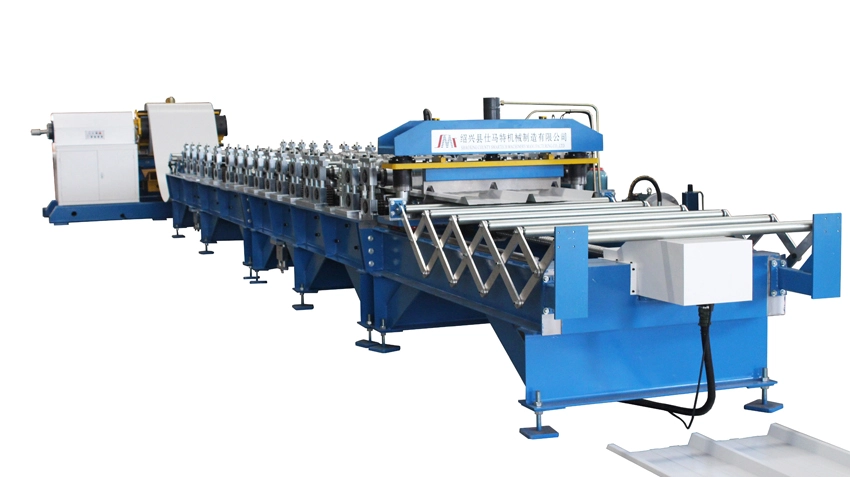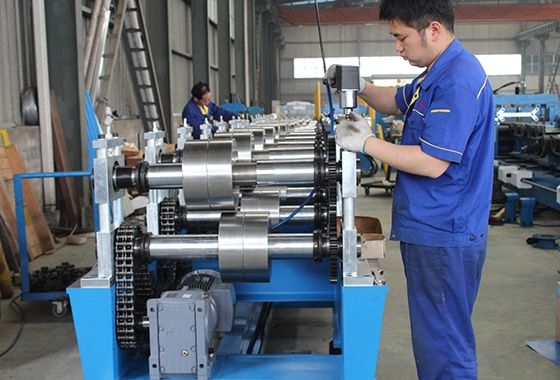Jun 18 , 2025
Roll forming has become a cornerstone in modern metal fabrication—particularly where speed, precision, and consistency are non-negotiable. From lightweight framing systems to high-strength structural components, the process empowers manufacturers to produce uniform profiles at industrial scale. Among the most efficient tools in this domain is the roll forming machine like Trapezoidal roll forming machine, which is specifically designed to create trapezoidal profiles with exceptional accuracy and repeatability. If you're aiming to improve output while reducing waste and lead times, understanding roll forming is key.


Roll forming is a continuous, automated process that converts metal coils into desired cross-sectional profiles. Here's a breakdown of a typical high-efficiency roll forming line:
Decoiling – The coil is unwound using a motorized decoiler that holds and releases material at a controlled rate.
Leveling & Feeding – A precision leveler flattens the coil and feeds it into the forming line, ensuring accurate alignment.
Pre-Punching or Notching (if needed) – Before forming, holes, slots, or notches can be added through hydraulic or servo-controlled punching systems.
Roll Forming – The strip passes through multiple rolling stations, each progressively shaping the material.
Secondary Processing – Operations like embossing, dimpling, or swaging may be integrated here, depending on profile complexity.
Cut-to-Length – A flying shear or hydraulic cutter slices the profile at the programmed length without stopping the line.
Stacking or Collection – Finished parts are stacked or conveyed for packing, inspection, or downstream operations.
Automation and real-time controls ensure minimal human intervention, enabling consistent output across long runs.
The versatility of roll forming lies in its ability to handle a wide range of materials, each with its own mechanical properties and application:
Galvanized Steel – Common for construction framing, ductwork, and roofing panels due to corrosion resistance.
Cold-Rolled Steel (CRS)– Ideal for structural components that require precise tolerances.
Aluminum – Lightweight and corrosion-resistant, perfect for transportation and HVAC applications.
Stainless Steel – Preferred for high-strength or hygienic applications such as food processing equipment or medical enclosures.
Pre-painted or Coated Coils – Used when aesthetics or additional protection is needed, often in architectural or decorative components.
The choice of material affects not just the roll tooling design but also the forming speed, required tonnage, and secondary operations. Smartech Machinery uses high-quality materials to produce high performance roll forming machinery for sale.
When it comes to producing long, uniform parts with complex profiles, roll forming is hard to beat. Here’s why manufacturers favor it over stamping, extrusion, or press braking:
High-Speed Production – Roll forming runs continuously, often at speeds over 30 meters per minute.
Precision Tolerances – The gradual forming process delivers consistent shapes with minimal deviation.
Material Efficiency – Reduced scrap rates thanks to coil-based input and optimized blank nesting.
Design Flexibility – Roll tooling can be engineered to create ribs, flanges, holes, and curves in a single pass.
Lower Tooling Costs (for Long Runs) – While upfront investment is higher, the cost per part drops significantly in large-volume production.
Better Surface Finish – Unlike stamping or bending, roll forming avoids localized stress points, preserving coatings and finishes.
For applications like metal roofing, light steel framing, guardrails, shelving systems, and solar panel supports, roll forming provides unmatched throughput and efficiency.

Modern roll forming machines are more than just rollers. They’re multifunctional systems that integrate various operations using dedicated tool heads:
Common Roll Forming Operations:
Pre-Punching & Notching – Done before the forming stage to reduce part stress and improve alignment.
Dimpling & Embossing – Adds texture, strength, or visual features to the profile.
Swaging – Used to reduce or reshape cross-sectional areas without material removal.
Curling or Edge Folding – Enhances safety and strength at the edge of panels or profiles.
Flattening or Flanging – Common in panel lines to prepare edges for overlap or fasteners.
Hydraulic Press Heads – Used for heavy-duty punching, dimpling, and shaping tasks.
Servo Punch Units – Offer high precision and programmable flexibility for complex hole patterns.
Cut-Off Heads – Flying shears or rotary blades synchronized with the forming speed.
Emboss Roll Sets – Installed within the forming stations to add functional or decorative textures.
Swage or Dimple Units – Mounted post-forming for additional processing without slowing the main line.
Each operation and tool head is engineered for integration, reducing downtime and maximizing production capability on a single, compact footprint.